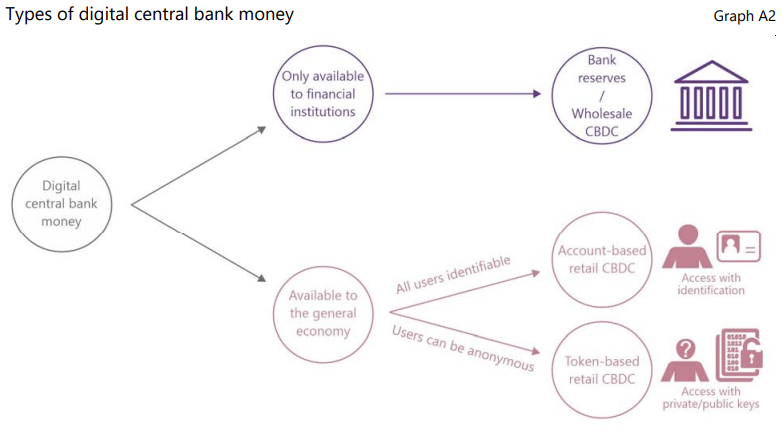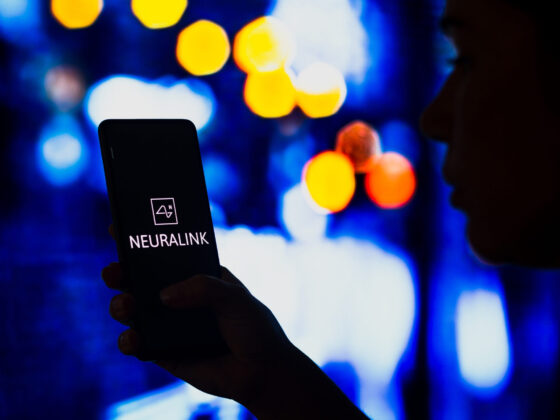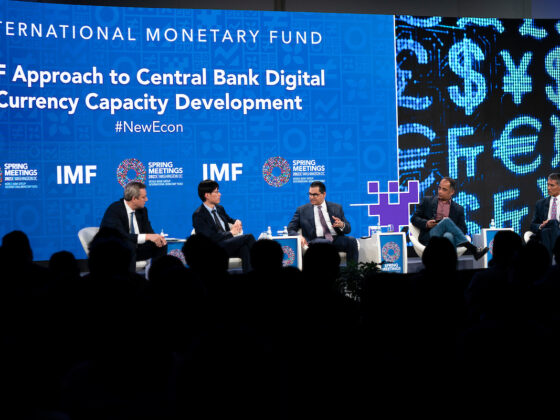Central banks have abandoned complete anonymity in favor of digital ID for their programmable CBDCs: perspective
Central banks are looking to digital ID schemes as a means to achieve universal access to CBDC, according to a new report on Central Bank Digital Currencies (CBDCs) in Africa from the Bank for International Settlement (BIS).
“Universal access to eNaira is a key goal of the CBN, and new forms of digital identification are being issued to the unbanked to help with access” — Central Bank Digital Currencies in Africa, BIS, November 2022
Digital ID is a mechanism by which the Central Bank of Nigeria (CBN) wants to achieve universal access to its CBDC — the eNaira — which is being carried out in the name of financial inclusion and helping the unbanked.
According to the BIS November 2022 report on Central Bank Digital Currencies in Africa, “Universal access to eNaira is a key goal of the CBN, and new forms of digital identification are being issued to the unbanked to help with access.”
The report goes on to say that “An eKYC-enabled CBDC that is integrated with the national ID schemes could greatly ease financial onboarding.”
“An eKYC-enabled CBDC that is integrated with the national ID schemes could greatly ease financial onboarding” — Central Bank Digital Currencies in Africa, BIS, November 2022

“The most promising way of providing central bank money in the digital age is an account-based CBDC built on digital ID with official sector involvement” — Bank for International Settlements, Annual Economic Report, 2021
Central banks around the world have abandoned the idea of complete anonymity, favoring instead digital identity schemes as unique identifiers for onboarding people to their programmable CBDCs.
On September 27, France’s central bank — the Banque de France — held an international roundtable in which central bankers from the US and the EU also confirmed that digital dollars and euros, should they go forward, would not be anonymous.
The same goes for India’s digital rupee, with the Reserve Bank of India announcing in October that its “CBDC would need to be compliant with AML [Anti-Money Laundering] regulations, which rules out truly anonymous payments.”
In the case of Nigeria, “When it comes to anonymity, the CBN has opted to not allow anonymity even for lower-tier wallets,” the BIS report reads.
“When it comes to anonymity, the CBN has opted to not allow anonymity even for lower-tier wallets” — Central Bank Digital Currencies in Africa, BIS, November 2022

“The informal sector – where most employment is in the continent favors the anonymity of cash. This is an obstacle to financial inclusion and eventually to the wide adoption of CBDCs” — Central Bank Digital Currencies in Africa, BIS, November 2022
Across the African continent, the majority of workers favor the anonymity of cash.
The BIS November 2022 report sees this dilemma as “an obstacle to financial inclusion and eventually to the wide adoption of CBDCs.”
While the majority of people working in Africa prefer the anonymity of cash, the CBN eNaira regulatory guidelines from October, 2021, says that a Bank Verification Number and/or National Identification Number “shall be used as unique identifiers” for individuals.
But once these individuals are uniquely identified, their purchasing power is then given over to the central bank, which limits how much they can spend and save on a daily basis.
In the case of Nigeria’s CBDC, the central bank has even programmed “caps on daily transaction limits.”
“The individual and merchant wallets of the eNaira have different caps on daily transaction limits and the amount of eNaira that can be held in them” — Central Bank Digital Currencies in Africa, BIS, November 2022
According to the BIS, “The individual and merchant wallets of the eNaira have different caps on daily transaction limits and the amount of eNaira that can be held in them, depending on their customer due diligence tier.”
Why are people being restricted on how much money they can hold and spend on a daily basis?
The official reason is that “The caps are intended to ensure that the eNaira is primarily used for smaller retail payments and that competition between eNaira and bank deposits is limited.”
“Users of eNaira are subject to a tiered structure of KYC requirements based on transaction and balance limits” — Central Bank Digital Currencies in Africa, BIS, November 2022
Central banks all over the world are not only looking to eliminate anonymous transactions through some form of digital ID, but also to make their CBDCs fully programmable.
In October, International Monetary Fund (IMF) deputy managing director Bo Li highlighted this programmability feature of CBDCs as a means of bolstering financial inclusion, stating that “By programming CBDC, money can be precisely targeted for what kind of people can own and what kind of use this money can be utilized.”
Likewise, the Reserve Bank of India announced in October, 2022 that it would explore programmability for its digital rupee, which included the possibility of setting expiry dates.
“By programming CBDC, money can be precisely targeted for what kind of people can own and what kind of use this money can be utilized” — Bo Li, IMF, October 2022
Today: "CBDC can allow gov agencies & private sector players to program/allow targeted policy functions (i.e. consumption coupons) By programming #CBDC the money can be precisely targeted for what kind of people can own & what kind of use this money can be utilized" Bo Li, #IMF pic.twitter.com/kcROTxXZau
— Tim Hinchliffe (@TimHinchliffe) October 14, 2022
“Central bankers, academics, politicians, and an assortment of elites from over 100 countries […] used Nigeria […] as a Petri dish to test their nefarious plans to use CBDCs to enslave the people of North America, Europe, and beyond” — Nick Giambruno, Financial Underground, November 2022
One year after launching in October, 2021, the eNaira has only achieved 0.5% adoption among Nigerians.
Financial Underground founder Nick Giambruno called the eNaira experiment a “massive failure.”
The Bloomberg article admitted, “Nigerians’ passion for cryptocurrencies doesn’t extend to the central bank offering.”
— Nick Giambruno (@NickGiambruno) November 2, 2022
“Nigerians view the eNaira as ‘a symbol of distrust in the ruling elite’ and that the people view the government as ‘hostile to them and therefore have no interest in anything it introduces,’” Giambruno wrote, paraphrasing a Bloomberg report.
Cointelegraph additionally reports that “the naira has been devalued around six times since 2015, and economists expect a further 20% loss in value next year, as the economy has been further compounded by galloping inflation, which could make the push for a CBDC a hard sell to many of the country’s citizens.”
“We tend to establish the equivalence with cash, and there is a huge difference there” — Agustin Carstens, BIS, October 2020

“A key difference with a CBDC is the central bank will have absolute control on the rules and regulations that will determine the use of that expression of central bank liability, and also, we will have the technology to enforce that” — Agustin Carstens, BIS, October 2020
Speaking at an International Monetary Fund (IMF) seminar on October 19, 2020, BIS general manager Augustin Carstens explained that a CBDC gives the central bank both “absolute control” over the use of the CBDC, along with the technology to enforce that control.
“We tend to establish the equivalence with cash, and there is a huge difference there,” Carsten said in 2020.
“For example, in cash we don’t know for example who’s using a 100 dollar bill today. We don’t know who is a 1,000 peso bill today.
“A key difference with a CBDC is the central bank will have absolute control on the rules and regulations that will determine the use of that expression of central bank liability, and also, we will have the technology to enforce that.
“Those two issues are extremely important, and that makes a huge difference with respect to what cash is.”
“Gradual obsolescence of paper currency” is “characteristic of a well-designed CBDC” — World Economic Forum Agenda, September 2017
Ultimately, a CBDC linked with digital ID could allow governments and corporations to put permissions on what you can buy with your own money, including expiration dates on when you can spend it.
Once digital ID and CBDC reach a certain level of acceptance and adoption by the general public, the option to go back to physical means can be quietly eliminated with little-to-no pushback.
In fact, a WEF Agenda blog post from September, 2017 lists the “gradual obsolescence of paper currency” as being “characteristic of a well-designed CBDC.”

“This digital identity determines what products, services and information we can access – or, conversely, what is closed off to us” — World Economic Forum, Insight Report, September 2018
Programming people’s access to products, services, and information with CBDCs and digital IDs lays the foundation for a system of social credit scoring like that of the Chinese Communist Party.
It is a system of control that can be used to manipulate, coerce, or otherwise incentivize changes in human behavior while eliminating individual agency, autonomy, and anonymity.














